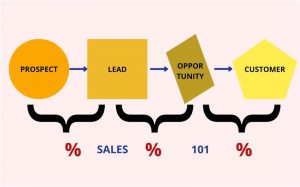You may have heard the saying, “you cannot manage what you do not measure.” There might be an element of truth in the phrase. But not everything in life, or business, can be measured accurately. This is where innovation metrics are unique.
Innovation is a systematic practice. It should be measured like any other aspect of your business.
Peter F. Drucker has a famous quote about innovation metrics. “innovation is real work. It should be managed like any other corporate function.”
It cannot be easy to find the right metrics to measure innovation. But it does not have to be overwhelming. Several metrics are commonly used to measure innovation.
In this post, we will look into different types of innovation KPIs. We will look into when to use them. We will also find out how to get the most out of them. It will, hopefully, make the decision process a little bit easier.
This is a part of our innovation management blog series.
We are looking to explain the big picture. We will address all the most critical innovation management themes.
Why is it essential to measure innovation?
Many people think about innovation as a mystical process of inspiration. They think it requires natural genius or inborn talent. But this downplays the role of deliberate creativity and structured effort.
These are necessary for generating new services, products, business models, and experiences.
In reality, innovation is about structuring creativity.
Once again, Peter F. Drucker, the father of modern management thinking, has a few wise words to offer. “Most innovations result from a conscious, purposeful search. The search is for innovation opportunities.”
Only a third of all Fortune 1000 companies use formal innovation. McKinsey reports that 77% of business leaders see innovation as a priority. But a mere 22% have metrics in place to measure innovation.
Metrics can be essential levers of innovation. It is useful for driving behavior and evaluating the results of specific initiatives.
Firms such as Google and 3M have had innovation metrics for years. 10% of employees’ time is dedicated to experimentation with new opportunities.
3M has mandated that 35% of the corporations’ revenues should come from new products. They must be introduced within the past four years.
How should you measure your innovation?
So, companies should measure their innovation with detailed metrics. But the nature of innovation can make it a challenge to measure.
PwC notes that innovation is not a standard process. This is unlike the product development lifecycle.
It has defined milestones and checkpoints. Many world-changing innovations sometimes move in fits and starts. This includes the nearly four decades it took for household electricity to catch on.
Innovative systems and solutions also tend to have many stakeholders. This makes it challenging to measure and recognize individual contributions.
Businesses can measure innovation with a mixture of:
- Timesheet metrics
- New product or service metrics
- Financial metrics
- Training and staff competency metrics
- Management and leadership metrics
We will examine the pros and cons of each of these categories of metrics. We will also look at some of the more commonly used KPIs.
First, though, a quick word on input vs. output metrics.
Some Common Metrics
Output and input metrics are different ways of measuring innovation.
-
Input metrics.
It measures the number of innovation enablers your business is investing in usually. E.g., It can include the hours of employee time allocated to innovation exercises. It can also be the total value of company investment in innovation.
-
Output metrics
It measures whether your innovation investments have the desired effect. E.g., the number of new products released to the market in the past two to three years. It can also be the revenue generated from these products.
Tracking input metrics is useful. But input metrics do not give you the whole story of company innovation. They only speak to what you are putting into the innovation process. Please do not focus on what you are getting out of it.
It is best to use a mixture of input and output metrics to get a complete picture. E.g., do not merely measure R & D spend (an input metric). You should measure this spending against new products’ revenue.
This combined approach helps to tell both sides of the story. These are the investments a company is making in innovation. These also include the results of these investments over time.
-
Timesheet metrics
Many companies use a timesheet system. It helps them to understand what employees are spending their time on. This system offers a simple way to measure innovation.
E.g., for each division or project area, a company can designate codes for time spent innovating. This includes “blue-sky thinking” or “product brainstorming”).
This provides a straightforward input metric for innovation. This can easily be compared across employees and teams.
Employee innovation time provides a quantitative record. But it does not say anything about the quality of these efforts. It also does not show the innovations resulting from this time.
But, timesheet metrics can still help investors, sponsors, and senior management. It helps them understand how much company time is spent on innovation.
One way to get a complete picture? Combine timesheet metrics with new product metrics.
-
New product metrics
Whenever a company launches a new service, it can track the resulting sales revenue. It can measure this against the release of other new products or services. This simple metric gives a record of the value of your innovation.
Firms can also track the number of ideas stemming from internal sources. This is versus the number of concepts found externally. E.g., via customers, clients, or through open innovation exercises.
Many companies track innovation’s total revenue value. They assess the percentage of company sales stemming from recent products.
E.g., 3M stipulates that at least 30% of each division’s revenues must come from new products. These products must have been introduced in the last four years.
But, this approach does not always work so well for market-defining products. For example, consider Apple’s world-changing invention, the iPod.
Apple counted iPods as an innovative product. The iPod market would count as a product metric. It represented almost 55 million units at its peak in 2008.
This would undoubtedly result in some impressive numbers. But the iPod market’s colossal value would risk distorting the metric’s applicability.
In a sense, the iPod’s runaway success makes it unfair to compare it to other innovation efforts. This includes even Apple.
McKinsey has suggested a way to get around this problem. Compare the rate of R&D-to-product conversion. Compare it with the sales margin of recent products.
This combined approach can prove a company’s innovation performance – even for disruptive innovations.
-
Financial metrics
Tracking innovation using financial metrics helps to keep teams accountable for their budgets. It is also a handy way to stay executive leadership happy.
E.g., firms can measure financial KPIs, such as:
- The percentage of company capital invested in innovation activities. In other words, the company’s ‘innovation portfolio‘)
- How departments are performing against their budget allocation for innovation activities. E.g., whether a section or division is underspending or overspending.
- The P/L impact of innovation on an annual basis. E.g., comparing R&D budget against recent product revenue)
These financial metrics help explain the necessary return on investment from innovation. It allows companies to understand the extent to which innovations contribute to profitability.
But, too much focus on financial metrics can be an innovation killer. This is because it encourages safe investments. FedEx, Amazon, and Tesla have backed risky ideas to succeed. This is even when these ideas could be costly in the short term.
-
Training and staff competency metrics
Training and competency metrics are another way to track and measure innovation. They help to strengthen a culture of innovation throughout a business.
For example, companies can track:
- The educational allowances are paid out to employees for innovative areas of study.
- The employees using innovation software or engaging in innovation training.
- Levels of staff satisfaction when it comes to involvement in innovation exercises.
- The number and seniority of employees are identified as ‘intrapreneurs.‘
A business can set staff competency KPIs of innovation by tracking these metrics. EG, each staff member, must take part in two innovation training exercises each year. They can also choose to commit to 50 hours of innovation study.
Simple benchmarks like these help companies measure their commitment to innovation. It helps to incentivize spending time and effort on creative product solutions.
-
Management and leadership metrics
Management and leadership metrics help to recognize the executive’s role in fostering innovation. It drives employees to be creative when responding to customer needs.
E.g., firms can track the following leadership KPIs:
- Innovative projects being overseen by senior management or sponsored
- The amount of time senior leaders spends on innovative projects.
- The number of significant market innovations driven by senior leaders
These metrics can provide an overall picture. It can tell how innovative a company’s leadership culture is. It can show what the company can do to promote innovation even further.
A great example here is General Electric. It keeps close tabs on the number of new patients coming from each company’s division.
It also follows the revenues stemming from these patents. Further, it notes executive leadership members overseeing these patents.
But, focusing too much on leadership innovation metrics is risky. It can risk ignoring company creativity’s real drivers. These include employees.
Firms should track innovation at all layers of their business.
Other frameworks & tools
Besides the range of metrics above, there are a couple of other useful frameworks. Therefore, companies can use this to drive innovation:
-
Adjacency matrices
It is not a measurement tool. It incentivizes firms to examine potential growth areas.
For example, Nike decided to branch out from golf shoes to golf balls, bags, and apparel in the late 90s.
-
Incongruity matrices
An incongruity matrix is also not strictly a measurement tool.
It helps to map out incongruities within your market. It shows the gap between how a product is vs. how consumers want it to be. So, it is one of the best ways to generate valuable innovations.
E.g., look at Tesla’s production of electric cars that outperform standard combustion engines.
Innovation Management KPIs You Can Use
We have an extensive list of useful and relevant innovation metrics and KPIs in one spot.
-
Timesheet KPIs
- Overall staff time spent percentage on high-yield innovation activities.
- Overall staff time spent on high-yield innovation activities
- Leadership time spent sponsoring and overseeing innovation activities.
-
New Product & Services KPIs
- Revenue percentage from new products or services introduced in the past X year(s)
- Products or services revenues from new customer segments
- Existing customers percentage trading up to next-generation products
- Percentage of income coming from services versus products (or vice-versa)
- Several ideas turned into innovation experiments by employees.
-
Financial KPIs
- R&D spending on product conversion
- New product contribution to sales margin
- P/L impact of new products or services introduced in the past X year(s)
- Percentage of capital invested in innovation activities
- Revenue percentage coming from international versus domestic markets
- Team performance against budget allocation for innovation activities
- Royalty & licensing income from patents
-
Staff Competency KPIs
- Teams that submit projects for innovation awards
- Percentage of employees trained in the innovation process
- The educational allowances are paid out to employees for innovative areas of study.
- The number of ideas turned into patents by employees.
- Levels of staff satisfaction when it comes to involvement in innovation exercises.
- The number and seniority of employees are identified as ‘intrapreneurs.’
-
Management & Leadership KPIs
- Innovative projects progressing through project milestones each quarter (driven by leaders)
- The significant market innovations that are driven by leaders
- Active innovation projects per division or business unit
- Managers with access to innovation tools and with formal innovation training
Conclusion
It can be rather challenging to choose what to measure. But measuring innovation does not have to be rocket science.
Measuring innovation is a continuous learning process. You most definitely need to keep reassessing and changing your metrics. So, you have to do this as your business and innovation management processes evolve.









